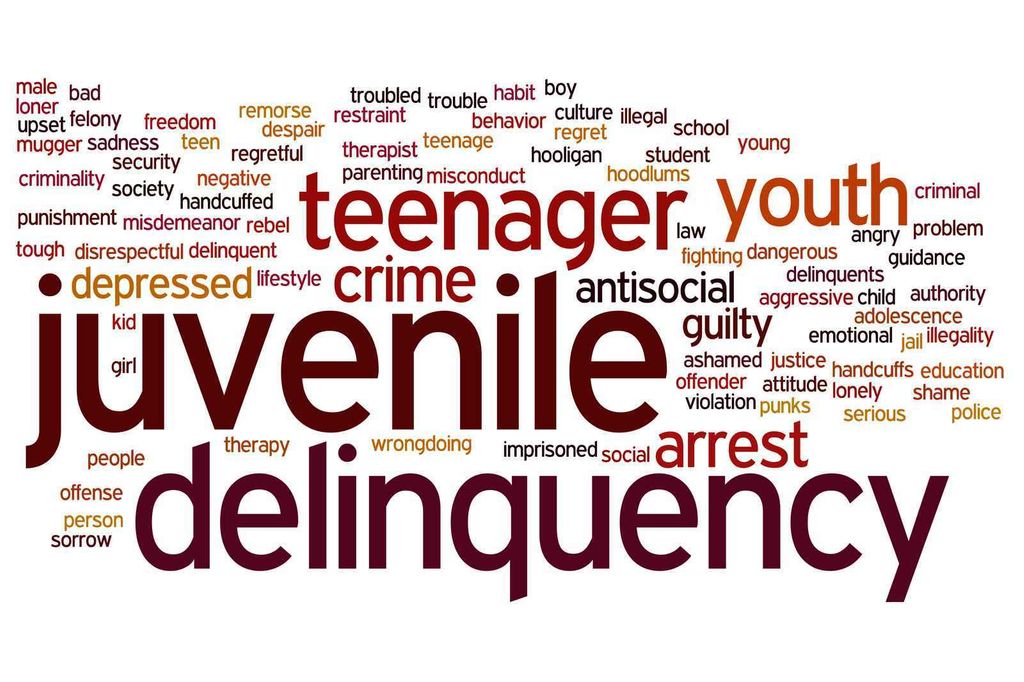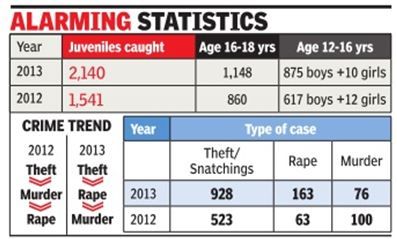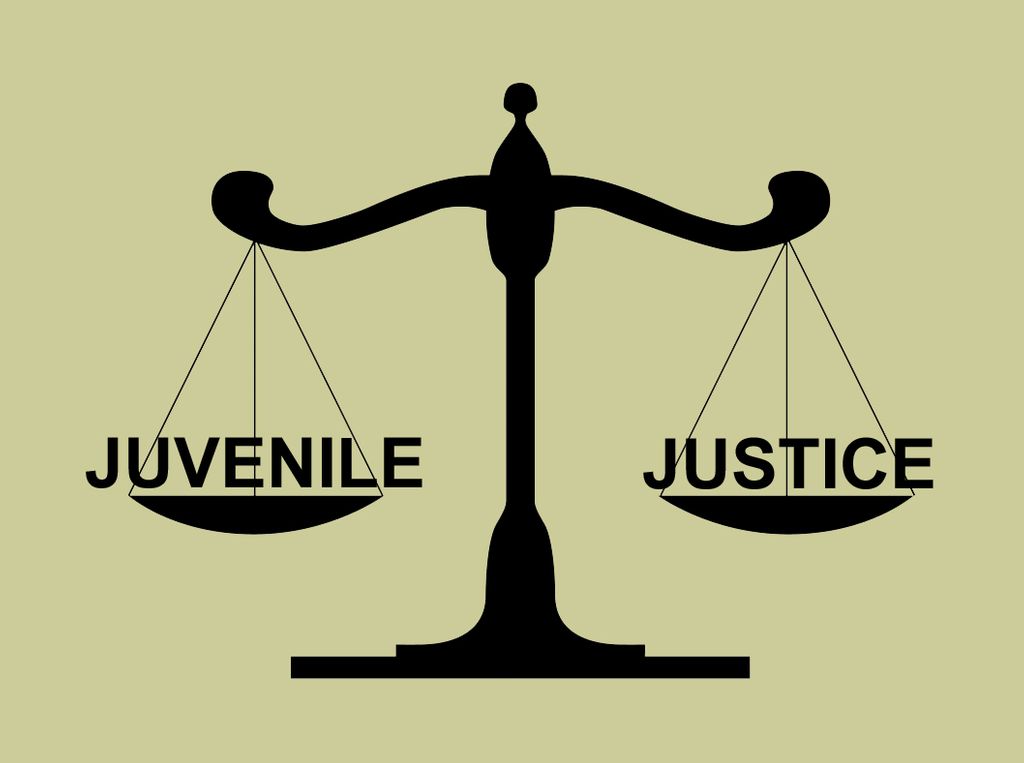Juvenile Delinquency In India
Sep 23, 2019 • 64 views
Who is a Juvenile?
A juvenile can be characterized as a kid who has not accomplished a specific age at which he can be held at risk for his criminal demonstrations like a grown-up under the law of the nation.
The term 'juvenile in struggle with the law' alludes to any individual beneath the age of 18 who has interacted with the Justice framework because of carrying out a wrongdoing or being associated with perpetrating a wrongdoing.
Delinquency
Delinquency is a criminal conduct, particularly that did by a juvenile. Contingent upon the country of birthplace, a juvenile turns into a grown-up anyplace between the ages of 15 to 18, despite the fact that the age is in some cases brought down for homicide and different genuine wrongdoings. Delinquency suggests directly that doesn't fit in with the lawful or moral gauges of society; it ordinarily applies just to acts that, whenever performed by a grown-up, would be named criminal
Juvenile Delinquency
Juvenile delinquency alludes to standoffish or crime of the youngster which abuses the law.

Juvenile Delinquency Source: Wilmington Criminal Attorney
Insights:
According to information assembled by the National Crime Records Bureau, the episodes of juvenile wrongdoing have continually expanded between 2010-2014
As of lately, a higher extent of youth have encountered captures by their mid 20s than before.
There has been a 7.2% ascent in juvenile violations between 2015-16. Most extreme number of bodies of evidence under wrongdoing against youngsters were accounted for in Uttar Pradesh, Maharashtra and Madhya Pradesh

Alarming Statistics Regarding Juvenile Delinquency Source: The Hindu
Another disturbing certainty is that over half of all wrongdoings carried out by juveniles were against ladies and such violations rose 92% all-India somewhere in the range of 2012 and 2014
Kinds Of Juvenile Delinquency
Juvenile delinquency, or culpable, is regularly isolated into three classes:
delinquency, wrongdoings submitted by minors, which are managed by the juvenile courts and judicial framework;
criminal conduct wrongdoings managed by the criminal justice framework;
status offenses, offenses that are just named such in light of the fact that one is a minor, for example, truancy, additionally managed by the juvenile courts.

Juvenile Delinquency Source: Huffington Post
Driving components adding to Juvenile delinquency
Poor school participation: School isn't just a spot to learn and develop; it is likewise an organized schedule that gives kids an objective to achieve every day. Youngsters who are not urged to become familiar with this sort of routine are missing out on building up great propensities. They are likewise encountering a great deal of leisure time that can be utilized to "learn" about different things that won't upgrade their lives or their fates.
Inability to acknowledge the daily schedule of going to class really imparts in youngsters that they don't need to consent to cultural standards and that they can do whatever they see fit.
Violence at home: Lashing out others for savagery youngsters involvement at home is normal. Youngsters exposed to fierce activities, or the individuals who witness it to other people, are bound to act us their feelings of trepidation and dissatisfactions. They frequently have a "couldn't care less" frame of mind and this enables them to stumble into hardship all the more effectively.
Peer Pressure: Peer Pressure is similar to neighborhood weights, peer weight from direct colleagues can affect how a tyke responds to terrible circumstances. In the event that the majority of their companions are submitting reprobate acts, the tyke may feel compelled to do likewise to be acknowledged.

Juvenile Delinquency Process Model Source: Slide Share
Socio Economic Factors: Juvenile delinquency is progressively normal in more marginalized neighborhoods. While all areas are not excluded from reprobate exercises, it is accepted they happen more in territories where kids feel they should carry out violations to flourish.
Burglary and comparable wrongdoings may really be a consequence of need and not that of only a frivolous wrongdoing.
Substance Abuse: Substance maltreatment in a home or by the tyke is an extremely regular reason for delinquency. Kids who are familiar to substance misuse regularly don't feel the necessities they have to flourish and are compelled to discover these necessities in different ways. Others, who become subject to a substance, may likewise need to carry out violations to continue their propensity.
Lack of Moral Guidance: Parental or grown-up impact is the most significant factor in discouraging delinquency. At the point when a parent or other grown-up collaborates with the tyke and demonstrates to them what is worthy conduct and what is viewed as off-base, the kid is bound to act in a manner that isn't reprobate.
It is significant for a tyke to have a bond with a decent grown-up who will impact their activities and demonstrate to them the distinction between what is correct and what's up
Poverty: Poverty is one of the significant purposes behind juvenile delinquency. Juveniles entertain themselves with reprobate acts so as to meet and fulfill the essential needs of their life.

Juvenile Delinquency Reasons Source: Slide Share
Family: It has been broadly acknowledged that groups of delinquents are described by disagreements, abandonments and other problems.Such families have been called attention to as one of the fundamental drivers of delinquency.
Factors identified with Mental Health: different psychological wellness elements add to juvenile delinquency. For instance: Conduct issue.
Virtual world:Constant presentation to hostility – verbal and physical – on TV news, recordings and games likewise adds to expanding juvenile delinquency.
Bad Peer Group: Juvenile delinquency is frequently caused or exacerbated by companion weight.

Juvenile Justice Source: Alabama Government
Universal Instruments and Conventions managing Juvenile Justice
UN Standard Minimum Rules for the Administration of Juvenile Justice (Beijing Rules)
UN Guidelines for the Prevention of Juvenile Delinquency (Riyadh Guidelines)
UN Rules for the Protection of Juvenile Deprived of their Liberty (Havana Conventions)
Rules for Action on Children in Criminal Juvenile System (Vienna Guidelines)
Juvenile Justice System in India Apprentices Act of 1850:
The Act accommodates the authoritative handling of youngsters, Both young boys and girls, between the ages of 10 to 18 as students. It likewise managed kids who submitted unimportant offenses.
Arrangements in the Criminal Procedure Code:
Under Section 399 of the Indian Criminal Procedure Code (ICPC) indicted youthful guilty party underneath the age of 15 could be sent to Reformatory Schools built up by the State Government.
Segment 562 of the C.P.C. likewise allowed release of certain indicted guilty parties on post trial supervision. It likewise allowed their discharge with counsel.
Under Section 82 of the Indian Penal Code kids under seven can't be considered in charge of their criminal demonstrations.
Segment 83 of the Code loosens up this age up to 12 under certain conditions.
Juvenile Justice Act, 1986
India was the primary nation to develop Juvenile Justice Act, 1986 framework in the light of the rule articulated in the United Nation Standard Minimum Rules for the Administration of the Juvenile Justice The principle goals were:
To give a specific methodology towards the counteractive action and control of juvenile delinquency
To build up the apparatus and foundation for Juvenile Justice tasks
To build up the standards and benchmarks for the organization of Juvenile Justice
The Juvenile Justice (Care and Protection of Children) Amendment Act, 2006
The JJ Act 2000 was in this way altered and in the future alluded to as the Juvenile Justice (Care and Protection of Children) Amendment Act, 2006
This Act shapes the lawful framework and system for the consideration, assurance, treatment and recovery of offspring of the two classifications
The Objectives of the Act:
To Lay Down A Legal Structure For The Juvenile Justice System In The Country
To Provide A Special Approach To The Protection And Treatment Of Juveniles
To plot the hardware and framework required for the consideration, assurance, treatment, advancement and recovery of juveniles
To set up standards and models for the organization of juvenile equity
To set up linkages and co-appointment between the formal arrangement of juvenile equity and intentional endeavors in the welfare of juveniles
To establish uncommon offenses in connection to juveniles and give discipline
The Juvenile Justice (Care and Protection of Children) Act, 2015
The Juvenile Justice (Care and Protection of Children) Act, 2015 was instituted to supplant the current Juvenile Delinquency law, the Juvenile Justice (Care and Protection of Children) Act, 2000 so juveniles in struggle with law in the age gathering of 16-18 years, associated with intolerable offenses can be attempted as grown-ups. Real Provisions of the Act:
It enables the Juvenile Justice Board to choose if a juvenile criminal in the age gathering of 16–18 ought to be attempted as a grown-up or not.
The Act had attempted to make the selection procedure of stranded, relinquished and gave up youngsters progressively streamlined while embracing a portion of the ideas from The Hague Convention on the Protection of Children and Cooperation in Respect of Inter-Country Adoption.
The demonstration had presented child care in India under segment 44. According to this, the families would join and relinquished, stranded kids or those in struggle with the law would be sent to them.Such families will be checked and will get money related guide from the state.
The law had additionally made arrangement that while embracing kid, need is given to debilitated kids and physically and monetarily unfit youngsters.
The guardians who are surrendering their youngster for appropriation get 3 months to reexamine their choice {It was before 1 month}.
The law ordered that any individual giving liquor or medications to tyke would be rebuffed with 7 years detain or Rs. 1 Lakh fine or both. An individual selling a tyke would be detained for a long time or Rs. 1 lakh fine or both.
Issues and Challenges with Juvenile Justice in India
Term of sentence:There is no intellectual or logical reason which demonstrates that aggregate and complete recovery can be accomplished by a youngster in struggle with the law inside a greatest time of three years.
Post culmination of term and aftercare: Absolute absence of execution of the arrangements of the JJ Act after a juvenile finishes his sentence is a noteworthy concern. India's huge populace makes it difficult to follow and guarantee that a juvenile once discharged proceeds with his treatment or even reports routinely to his probation officer.
Juveniles in Adult jails:National Commission for the Protection of Child Rights (NCPCR), various plausible juveniles are found in grown-up prisons. Further, the police subvert the rules of JJ Act and hotel juveniles into grown-up prisons.
Issues with Juvenile Homes:
Absence of prepared staff and money related debasement is a noteworthy worry in juvenile homes crosswise over India
In majority of the homes, there is complete absence of professional preparing, guiding and individual consideration plans
A 2013 report by the Asian Center for Human Rights (ACHR), "India's Hell Holes: Child Sexual Assault in Juvenile Justice Homes" expressed that prisoners are exposed to rape and abuse, torment and abuse, aside from being compelled to live in brutal conditions
Route Forward:
Tyke direction centers ought to be set up so as to give suitable treatment to the affected and mal-balanced youngsters.
Families ought to be instructed to understand the significance of giving appropriate regard for the necessities of their small kids. Interests in fortifying child rearing aptitudes and backing can go can fill in as preventive measures.
Appropriate help to under-privileged youngsters ought to be given to work in them great character and well behaved demeanor.
Social condition - ghetto regions, occupied commercial centers, betting focuses, etc.should be improved
The general financial models of the individuals must be expanded to keep kids from getting to be reprobate because of monetary exigencies
Measures ought to be taken to improve states of juvenile homes, remedial homes through standard investigation, sufficient assets and granting preparing to staff.
The aftercare framework ought to be fortified to guarantee that a juvenile once discharged proceeds with his treatment and is successfully restored in the general public.
Indian government has taken a great deal of meticulous endeavors to diminish juvenile delinquency yet there is as yet far to go for the administration. Some uncommon arrangements have been actualized in India for Juvenile delinquents. Observation homes have been built up .This intercession is extremely important to get Juvenile back in mainstream society.

